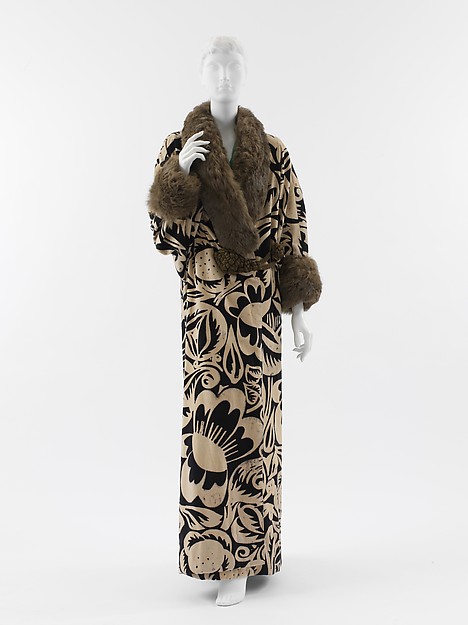
Happy birthday to the French artist Raoul Dufy, born on this day in fashion history in 1877. As a young man, Dufy studied painting at Paris’ prestigious Ècole des beaux-arts, finding early success with an evolving artistic style that found inspiration in avant-garde art movements of the era, including Impressionism, Fauvism and Cubism.

Dufy was a man of many talents, working successfully during his lifetime as a painter, illustrator and textile designer. But it is his incredible body of work within the latter arena that Dufy was able to truly distinguish himself from his contemporaries, designing bold, vivid patterns that served to become defining elements of the visual landscape of the Art Moderne and Art Deco eras.
Dufy came to textile design with the guidance of haute couturier Paul Poiret who prided himself on his patronage of young artists. In Dufy, Poiret found a shared decorative vision that he soon translated into a business, opening La Petite usine, a small wood block-printing factory in 1911. The business was short-lived, however, as Dufy soon left to work for the prestigious—and arguably more lucrative—textile firm Maison Bianchini-Férier in 1912, but his

relationship with Poiret would continue for many years. Poiret often used Dufy’s bold fabric designs in his garments, two examples of which are featured here. In both the “La Perse” coat and the “Bois de Boulogne” dress, it becomes clear that Dufy’s designs were ideally suited for Poiret’s clothes, his flat, planar surfaces allow for the full breathe of Dufy’s expansive floral patterns. At first glance, the “La Perse” coat is deceptive, appearing to be made of plush black devoré silk velvet but closer inspection reveals it to actually be a wood-block print, produced entirely by hand in Poiret and Dufy’s workshop. This thick lined, mono-colored woodblock pattern would become a defining element of the aesthetic of Dufy, who repeatedly found inspiration in the “exotic,” like many other artists of the period. He often incorporated tropical flowers and animals into his patterns, as well as scenes from history and everyday life. His patterns are characteristically immersive, using bold lines and vivid blocks of color with repeats blending seamlessly in to one another to envelope the entire fabric.

Dufy would work for Bianchini-Férier until 1932. After, he continued to work as a painter and illustrator until his death in 1953, having been awarded the main painting prize at the Venice Biennale just the year before. Over one hundred years since their collaboration began, Bianchini-Férier still prides itself on its twenty-year relationship with Dufy and continues to produce and sell his distinctive designs in a variety of color-ways, featured here.


Remembering Dufy fondly in his memoirs, Poiret wrote of the artist: “A rosy-cheeked, blonde arch-angel, with curly hair, rather dollish, with petites gestures, one had to see him in his workshop, walking with short steps, in shirt sleeves, every moment brining out from his portfolios masterpieces, the least of which is, to-day, worth tens of thousands of francs. Dufy never ceased to be a simple artist, whose heart and soul are entirely devoted to his work.”[i]
[i] Paul Poiret, King of Fashion: The Autobiography of Paul Poiret (London: V&A Publishing, 2009), 87.
[…] Пуаре из ткани по эскизам Дюфи, 1911 г. (источник: theartofdress.org) и слинг-шарф Linuschka Bolero Absinthe 2015 […]
LikeLike